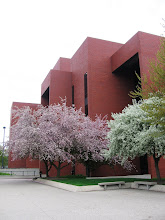Librarians Create a Mobiquitous Environment to Deliver Library and Information Services

When using a new digital product or service, we rarely think about the behind-the-scenes work that went into creating and making it available. We just know we want an end result that is convenient, easy to use, trouble-free, and accessible. These same types of expectations come about when initiating library services and products.
Librarians and information professionals are continually creating and designing opportunities for students and faculty seamlessly to use digital products and collections for their research, learning, and entertainment needs. By providing ubiquitous, mobile access to information and digital products in an anytime, anywhere environment, librarians and information specialists serve as information architects who make a profound enhancement by designing and improving how people obtain and apply information.
Today’s library effectively comes into the consumer’s living and work space. In this context, the library is a virtual mobile resource that is mobiquitous because of its mobile and ubiquitous nature. This is because of the power of the Internet and 3G networks to deliver text, pictures, video, and data, along with the mobile phone’s features of portability, adaptability, and capability to perform Web-based information gathering applications. These combined characteristics have served to transform the mobile phone into a powerful small-screen, handheld, smart device for research and learning.
Providing our students and faculty with convenient access to an array of virtual library services means that people who use our resources do not necessarily have to walk in our front doors. It also means that they have 24-hour access to engage in the use of informational materials to meet their information needs.
Prior to today’s virtual library services, students and faculty accepted that making a trip to the library was absolutely necessary to fulfill their course-related information needs. Now, much of the information required for projects, classroom assignments, and timely scholarly research is available online through full-text specialized information resources such as databases, electronic catalogs, digital image collections, and document delivery services. Librarians have greatly facilitated the development of well-conceived and robust virtual collections while also improving customer service and providing outstanding information support to visitors who come into the physical library.
At the Ball State University Libraries, we continue to develop library applications that can be accessed by using small screen mobile devices such as iPhone, Blackberries, netbook computers, and other similar devices. Please view www.bsu.edu/libraries/mobile to see what is available for our mobile device user. Applications of this type build on our students’ experiences with using their mobile computing devices and digital technology as their information tool.
Labels: Arthur Hafner, cell phones, digital library services, virtual library


0 Comments:
Post a Comment
<< Home